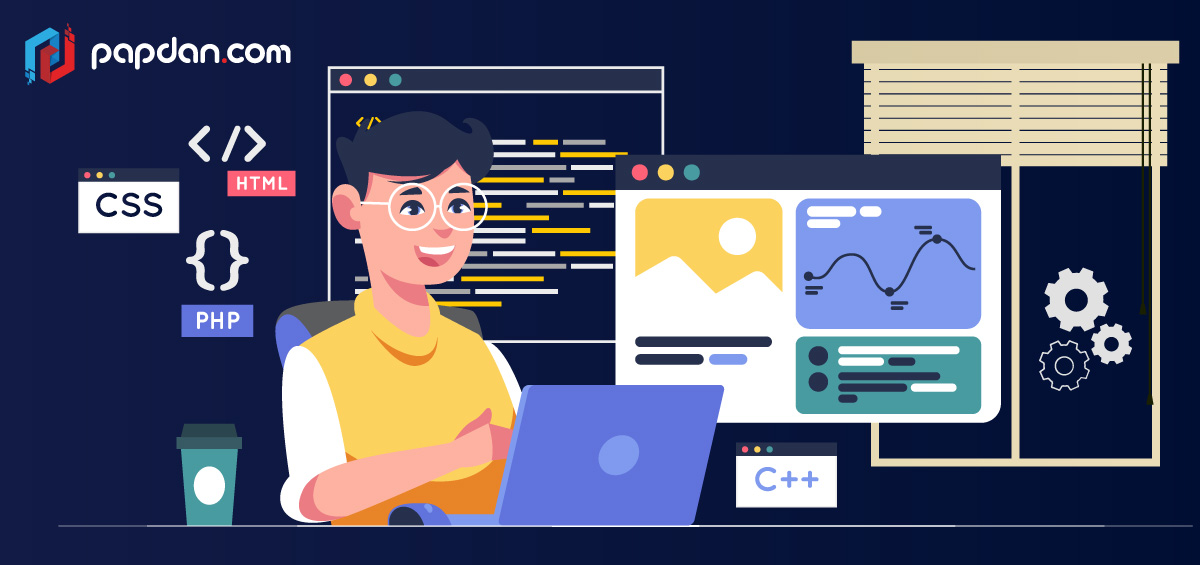Being productive as a web developer is tough. It’s a very taxing job that calls for a lot of focus and can quickly wear out the mind. Making the most of your working hours depends greatly on your ability to concentrate, use automation to speed up processes, and manage distractions. You can find our top productivity advice for programmers and developers in this collection, which covers everything from choosing the best developer tools to taking regular breaks to successfully avoiding distractions while working.
Choose the best code editor that suit you
An effective source code editor is the foundation of developer productivity. Although there are many excellent options available, it can be difficult to choose which is the ideal one because it depends on your needs and goals. It’s worthwhile to experiment with various code editors to determine which one best suits your workflow. The following are some crucial considerations:
- Which programming language(s) you are using. You require a code editor with syntax highlighting available for the languages you need (at least as a plugin). In addition to syntax highlighting for programming languages, several code editors also include syntax highlighting for well-known technologies like React.
- If your prefered code editor offers a sufficient theme and plugin ecosystem that provides the capabilities you require (for instance, a high contrast theme if you have low vision).
- If you upload your work to a platform for sharing code, like GitHub or Bitbucket, the built-in Git capabilities might be helpful. For instance, Visual Studio Code enables direct GitHub commits without requiring you to exit the editor.
- Choosing a code editor that allows you to add or import code snippets and/or keyboard shortcuts is also a smart option if you want to utilise your own.
Each day, begin with the most difficult task
It’s easy to get caught up in daily activities, and procrastination is a frequent tendency among developers, especially if you work as a freelance web developer and must manage your own deadlines. As a result, it regularly happens that despite working all day, you come to the realisation that you didn’t really accomplish much. If you build a hierarchy of daily chores and start with the most challenging task each day, rather than multitasking, you can avoid that.
Although multitasking had long been regarded as advantageous, it has since become clear that most people are not suited to it. Only 2% of people are skilled at multitasking, according to research, and the remaining 80% can lose up to 40% of their productivity. Therefore, if you fall into the 2%, keep multitasking; if not, prioritise your work and concentrate just on one item at a time.
Plan ahead for your tasks
Making a detailed schedule for your work can also greatly improve your productivity. You may either set up workflows using a tool like Trello or create task lists and mark off finished activities using to-do applications like Wunderlist and Todoist. These days, you have a tonne of wonderful alternatives for combining various productivity apps, like Zapier and IFTTT (If This Then That).
You’ll also need to experiment with task scheduling and consider what tools you’ll actually require. It is possible to manage work using multiple apps, but there is a risk involved in using too many tools at once. In some circumstances, an excess of complexity can even result in decreased output.
Regularly take breaks
Humans are unable of maintaining consistent focus for an extended period of time, and this is particularly true of demanding mental tasks like programming. The amount of time that people can focus on a topic without their thoughts wandering to something else has been the subject of numerous studies. For instance, this study claims that sustained attention can last for approximately 45 minutes, while another claims that it can last for 52 minutes straight before a 17-minute break.
Then there is the well-known Pomodoro Technique, which measures time with a kitchen timer shaped like a tomato. It functions with 25-minute time blocks interspersed with 5- and 10-minute pauses. There are even Pomodoro apps you may use while working because the Pomodoro Technique has gained such popularity with the developer community.
Overall, there isn’t a set method that always works, and everyone has a different time restriction, so you’ll need to try a few different things to see what works best for you. It’s also not worth adhering to a very rigid rule: don’t interrupt your job if you are currently in the zone just because the break time has come.
One thing needs to be kept in mind, though. When you do get up from your desk for a break, it must be a meaningful one. Every single study on the subject shows that checking emails, Slack notifications, social media, blogs, or simply staring at any kind of device won’t matter as a break for your brain.
Use the command line
It’s a good idea to develop the habit of using the command line in your regular workflow in addition to automating activities. First, switching from a GUI to a CLI (Command Line Interface) will greatly speed up your productivity (Graphical User Interface). For instance, to expedite WordPress development and maintenance, here is a guide on how to set up the WordPress CLI. Second, being able to utilise CLI commands safely is a key programming ability that can be used to many other aspects of your job.
Conclusion
You may use your working hours more effectively and enhance your development workflow at the same time if you follow our productivity recommendations, at least some of them. Even while developing a new habit can be challenging at first, it quickly becomes automatic.
Always keep in mind that exploration is the key to productivity. If a tool or approach you try out doesn’t work for you, drop it and try the next one until you find the one that complements your personality and workflow the most.

